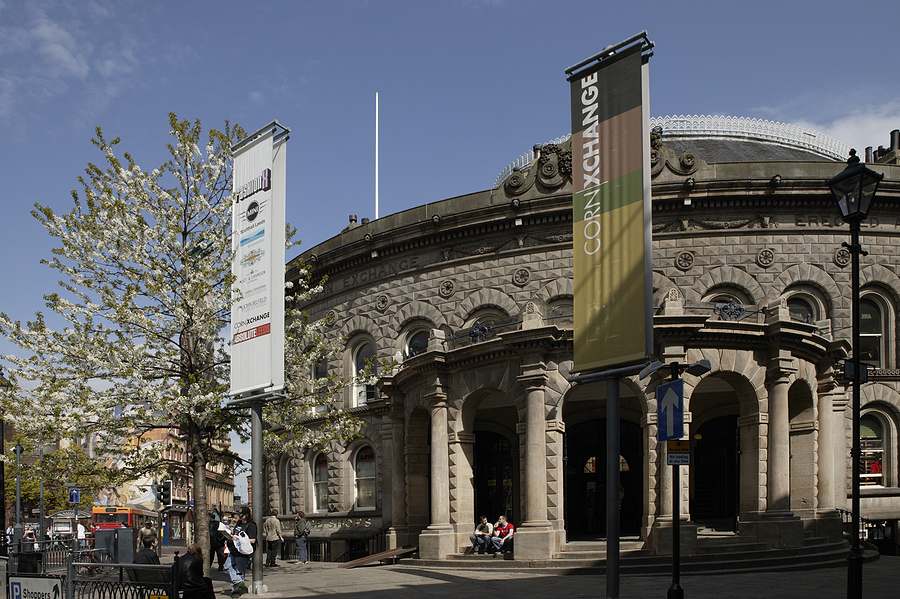World’s Largest Tower Crane Enters Full Production
A tower crane that can reach over 90 metres in the air with no additional support and lift up to 600 tonnes has gone into full production, making it the largest tower crane in the world.
The XCMG XGT15000-600S was initially announced in December 2021, and six months later the first “super tower cranes” completed their journey through the assembly line.
This new crane hire, with an independent lifting height of 92.5 metres and a maximum lifting weight of 600 tonnes, takes a record that has been held for over 40 years by the Kroll K-10000.
By contrast, the venerable Danish tower crane can only lift 120 tonnes with a maximum height of 82 metres, a feat that at one point was considered to be insurmountable due to a wide range of technological and engineering bottlenecks.
The team at XCMG managed to resolve all of these through sheer scale; it is the size and weight of 100 conventional tower cranes and throughout its development led to the breakthrough of 60 core technologies.
The design, whilst officially classified as a tower crane, actually consists of a main flat-head tower, an auxiliary boom tower and also featured a manned lift, rather than a series of ladders.
It also includes a series of other world records, such as the first four-bar linkage, and the first crane that supports the type of “super rope” necessary to lift 600 tonnes. The crane was tested over 2,000 times over the span of 1,440 hours.
The intended use of a crane of this scale is to help facilitate the construction of huge construction projects such as the Changtai Yangtze River Bridge.
This bridge, along with other mega-bridge constructions uses a modular development system that would be far more difficult to undertake without considerable crane upgrades of the type not seen in decades.
Read more£62.7m Hotel Development Launches In Leeds
There could be a big demand for crane hire specialists over the next couple of years, as a new 12-storey hotel is set to open in Leeds city centre.
UK Commercial Property REIT Limited has acquired a site to develop a new hotel that it claims will be “among the very best in Leeds”, the Yorkshire Post reported.
It will stretch across 140,000 square feet, consisting of 305 rooms, meeting rooms, a gym, and food and drink outlets, including a rooftop bar.
A spokesperson stated the £62.7 million development presents a good opportunity to provide Leeds with a top-quality hotel, as the city has “excellent central amenities but an under-supply of quality hotels”.
It will be situated on Sovereign Square in the city centre, which is in an excellent location for the railway station, office blocks, shops, and bars.
The hotel is anticipated to be ready for opening in 2024, and Hyatt Hotels has signed a 25-year franchise agreement for it, operated by Interstate Hotels & Resorts. It will be divided into short-stay lodgings Hyatt Place and long-stay Hyatt House brands.
According to the official statement, revealed to the newspaper: “The development is targeting a BREEAM Excellent rating and will have a positive impact on the local community with the creation of a number of new jobs.”
The site was owned by Leeds City Council, and UKCM will fund the project, as it fits in with its strategy to invest in real estate that will provide “resilient rental incomes”.
As Leeds has been revealed as one of the fastest growing cities in the UK, the organisation chose it for its potential to deliver strong yields. Indeed, it has been highlighted as the main driver of the regional economy, which itself is expected to surge by 21 per cent within the next decade, thanks to a rise in business and financial services in the area.
This is not the only development in the pipeline for the Yorkshire city, as Southside Leeds Ltd is planning to submit pre-application proposals to develop a hotel and offices on a site next to Bridgewater Place in Holbeck, Insider Media reported.
Leeds City Council’s City Plans Panel will meet next week (May 19th) to discuss the idea to regenerate the Westbank site, after it was acquired by Stamford Property Holdings together with Shelborn Asset Management in 2021.
The current three-storey call centre and 117 car parking spaces will be transformed into two office buildings with both ground floor retail and leisure facilities, stretching nine and 11 storeys respectively. The plans also include a 19-storey hotel with 2,101 bedrooms, and a further two 11- and 12-storey office blocks.
If the council gives the proposal the go-ahead, there will also be fresh landscaping, public realm, cycle and pedestrian infrastructure for users of the buildings.
A planning officer’s report stated: “The proposal offers a significant opportunity to regenerate a large prominently located vacant brownfield city centre site.”
It went on to say the Westbank site, which has a capacity of 225,000 square feet, would “deliver new employment, visitor accommodation, public landscaped greenspace, new pedestrian and cycle connections and support the continuing regeneration of this area of the city centre”.
Read more
£12 Billion Backlog In Local Road Repairs
The state of the nation’s local roads often hits the headlines and it seems that more must yet still be done to make them fit for purpose, with the latest Annual Local Authority Road Maintenance survey from the Asphalt Industry Alliance (AIA) revealing a backlog of repairs in England and Wales of £12.64 billion.
Despite the fact that average highway maintenance budgets have risen, up four per cent on 2020/2021, the amount of investment in the carriageway has fallen, with the reported backlog climbing by 23 per cent compared to the previous 12 months.
Further findings include the fact that local councils would have required an additional £1 billion in 2021 to reach their own target road conditions, before even addressing the backlog.
In all, one pothole is filled every 19 seconds, while nearly one in five local roads could potentially need to be rebuilt within the next five years. Roads themselves are only resurfaced on average once every 70 years.
AIA chair Rick Green explained that while local authorities may have a legal responsibility to keep the roads safe, they lack the funds to do so “in a cost-effective, proactive way”. This has led to continued decline in the structure of the roads.
“Although surface repairs have a part to play in extending the life of local roads, short-term fixes, including filling potholes, is indicative of a network that is ‘on the edge’ and less efficient and sustainable when it comes to materials usage and whole-life carbon emissions,” he said.
Mr Green continued, noting that the recently announced three-year spend on maintenance in England is a “step in the right direction” but added that it doesn’t go far enough. Significant investment is required around the country to deliver a “safe, resilient sustainable network on which we can all rely”.
The study also revealed that the legacy of inconsistent funding across England and Wales is preventing engineers from providing long-term and cost-effective improvements for local roads. Instead, they are being forced to adopt a more piecemeal strategy, with patch and mend repairs taking place.
Further research from the UK Roads Liaison Group found that investment in the local road network would deliver a wide range of benefits, everything from helping the country achieve net zero and reducing pollution to improving biodiversity, supporting economic growth, helping with climate change adaptation and supporting accessibility and inclusion.
As the organisation emphasised in its report, England’s local road network is fundamental to life, now and well into the future. It is the public sector’s biggest physical asset, valued at nearly half a trillion pounds. Almost every journey begins and ends on a local road and if these roads did not exist, the economy would collapse to near zero.
Looking for road surfacing companies at the moment? Get in touch with Sangwin today.
Road Resurfacing Postponed After Local Objections
Major resurfacing work on a stretch of road through a North Yorkshire town will be postponed after residents complained the disruption would affect business trade during its busy tourist season.
North Yorkshire County Council held a public meeting last week to discuss plans for full resurfacing of the A684 between Leeming Bar to Junction 37 on the M6, inviting designers, contractors, and members of the community to attend.
As a result of several people complaining the roadworks would occur at the start of the peak tourist season, impacting their business, the local authority decided to push the project back till autumn.
Highways Area manager Jayne Charlton said: “We hope the community can appreciate that there is no ideal time to carry out such extensive works. We have been able to extend the funding until the end of 2022, but we must balance public opinion with the risks that carrying out this type of work in the winter may bring.”
She went on to say that resurfacing roads during the winter can be “very problematic”, and as the work is urgent, the council wants to “avoid any unforeseen delays”.
The project will see the A684, which is currently in a poor condition, fully resurfaced, which will improve safety for all users.
Ms Charlton estimated the new start date for the job will be late September, avoiding major sheep sales at auction.
Despite the consideration of the local authority, some members of the public believe this is still an inconvenient time to commence work on the road.
Hawes B&B owner Fiona Gardham told Examiner Live this would still affect late-season bookings and the auction mart will still be busy at this time of the year.
“Last October we were full, and I have already got bookings in for October,” Ms Gardham stated, suggesting instead: “What the vast majority of businesses said at the meeting was that they wanted the work doing from Monday to Friday between November and February, when 90 per cent of our trade is at weekends.”
North Yorkshire County Council has been given £7.06 million for these improvements, as part of the Department for Transport’s Safer Roads Fund, which aims to repair the 50 most dangerous A-roads in the UK.
It was one of only four bids that were successful to receive finance from the Safer Roads Fund. Some of the money has already gone to installing a new flood detection system, which is the first one in Yorkshire. This has been fitted at flooding hotspots along the road.
Safety improvements have also been put in place at the crossroad junction to the west of Patrick Brompton, while changes to the layout and resurfacing work has been implemented in Leyburn, and new lay-bys have been built along the A684.
In addition to this, the local authority has been busy improving four junctions in Scarborough, as part of a £4 million scheme to ease congestion and make roads safer for drivers and pedestrians. The initiative is due to finish by the end of April, following resurfacing of the roads between March 28th and 30th.
If you’re interested in surfacing contractors in Hull, give us a call today.
Read moreResurfacing Works Complete Leeds Corn Exchange Project
The area around the landmark Leeds Corn Exchange has undergone an improvement project, and the finishing touches are being put in place with some resurfacing works. News Anyway reports that the project is due to be completed by the end of spring, weather permitting. When it is complete, the area will be partly pedestrianised,
The work will take place overnight to minimise disruption, with roads in the area closed to general traffic between 8pm and 5am. The renovations aim to the make the area more pedestrian and cycle friendly, with new cycle tracks and pedestrian crossings being installed, and pavements widened.
Traffic will be partially rerouted, and priority given to buses, with extra bus stop signage provided. Elsewhere, excess street clutter will be removed, and more greenery introduced. It is hoped that some spaces can be used for outdoor dining.
Councillor Helen Hayden, Leeds City Council’s executive member for infrastructure and climate said: “It’s exciting to see the final resurfacing works happening on this scheme. It gives these historic streets and buildings the surroundings it deserves whilst increasing opportunities for active travel and providing extra public space in the city centre.”
The works are part of the wider Connecting Leeds project, which is an ambitious scheme to reduce car dependence, and develop better park and ride, cycling, and public transport links. The aims are aligned with the Leeds City Region economic plan, and the Clean Air Leeds programme.
Tracy Brabin, Mayor of West Yorkshire said: “The Corn Exchange is a real gem and is a beacon of culture and creativity, so it’s fantastic to see these changes, which will make the historic landmark more welcoming to the people of Leeds and visitors from far and wide.”
She added: “Improving cycling, walking and public transport provisions form a key part of my pledge to tackle the climate emergency, so I’m also delighted that we are part of this scheme that will see more green spaces and provisions for active travel.”
Leeds Corn Exchange is one of the city’s most recognisable buildings, which was built in 1863 for corn traders. The Grade I listed building, with a distinctive oval shape and domed roof, was designed by architect Cuthbert Brodrick, who was from nearby Hull. He was influenced by Parisian commercial buildings, and also designed Leeds town hall.
The domed glass roof was installed to provide good light to the trading floor, to help the traders assess the quality of the grain. Offices were added on a mezzanine level around the central floor. The grand building helped to put Leeds on the map as one of the principal corn markets for the north of England.
By the 1960s, the corn trade had declined, and by the 1980s, there were few occupants and the future of the building came under question. Fortunately, by 1990 it had been transformed into a high-end shopping centre. It is hoped that in the future, a pavilion area to host outdoor functions, shops and cafes can be added.
If you are looking for surfacing contractors in Hull, please talk to us today.
Read more




